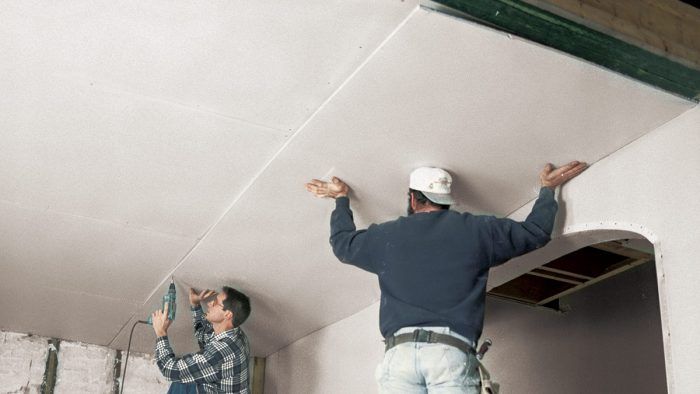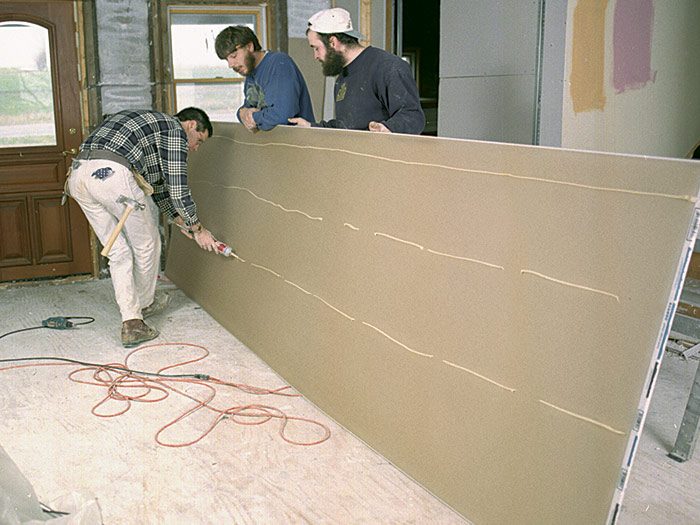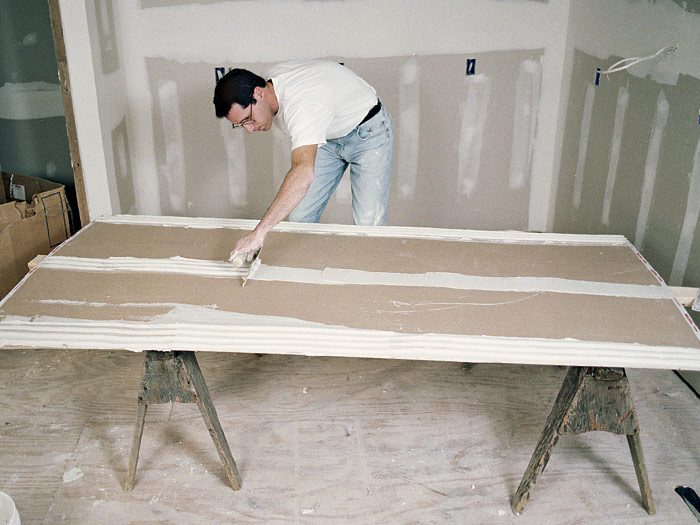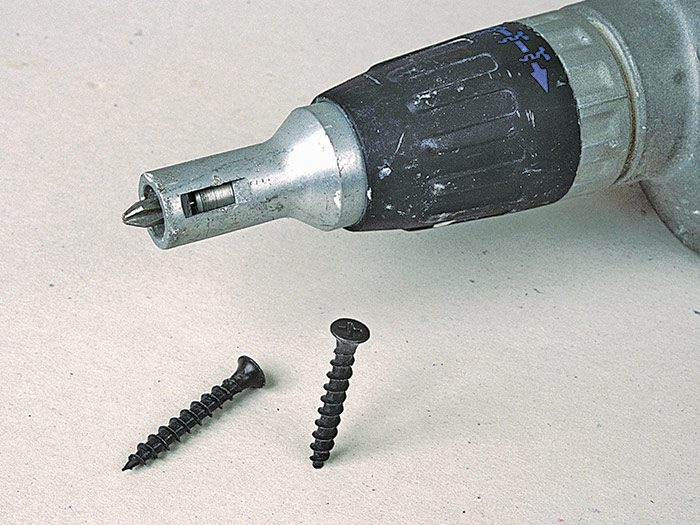Multilayer Drywall Applications
Use adhesive to secure the face layer of drywall when installing multiple layers.

Double or multiple layers of drywall are sometimes required for increased fire resistance or for reduced sound penetration. You can secure all layers with fasteners in the standard manner, but a good alternative is to use adhesive to attach the outermost, or “face,” layer. Using adhesive increases the strength of the structure and reduces the number of fasteners needed. For fire code, you may still need all the required fasteners. Using drywall adhesives with single-layer applications is explained in “Fastening Drywall“; the procedure is the same when applying the face layer of drywall in multilayer applications. Apply a 3/8-in. bead of adhesive over the location of each framing member and then use screws to fasten the panel around the perimeter and every 2 ft. in the center of the panel.

| WORK SMART: In multilayer application, taping seams and corners before applying the second layer helps protect against fire and reduce sound travel. |
You can also use joint compound as an adhesive to attach the face layer. Apply a strip of joint compound approximately ½ in. thick and 5 in. wide every 16 in. or 24 in. (depending on the framing spacing). Then use a notched trowel to groove the compound and leave beads of compound 3/8 in. wide by ½ in. high and spaced 1 in. apart. When using this method for wall applications, pre-bow the panels (with the bow facing in against the wall) and fasten only the edges. For ceilings, you’ll also need a fastener in the center of the panel on each framing member.

If you use screws or nails to attach double or multiple layers of drywall, it’s important to attach each layer with the correct number of fasteners. Never just tack the first layer or layers and fasten only the last layer correctly. Each layer is heavy and must be attached properly to prevent sags, loose panels, and popped nails or screws. In addition, make sure that the screws for each layer penetrate the framing at least the minimum depth of 5/8 in. for wood framing, 3/8 in. for metal framing.

There are a couple of ways to lay out the multiple layers. Just remember that for both fire protection and sound control it is best to avoid overlapping seams. One method is to attach the first layer parallel to the framing and the second layer perpendicular to the framing. This layout provides a simple answer to preventing seam overlap.
Many people, however, find it easier to attach each layer perpendicular to the framing, especially if the o.c. spacing of the framing is off. Just be careful to keep seams on the face layer away from seams on the underlying layer; the panels should be staggered so that the seams are at least 10 in. apart. On a ceiling, for example, start the first layer with a 24-in.-wide panel and the second layer with a 48-in.-wide panel. Use the longest lengths possible and make sure that any butted seams do not line up with butted seams on the first layer.





